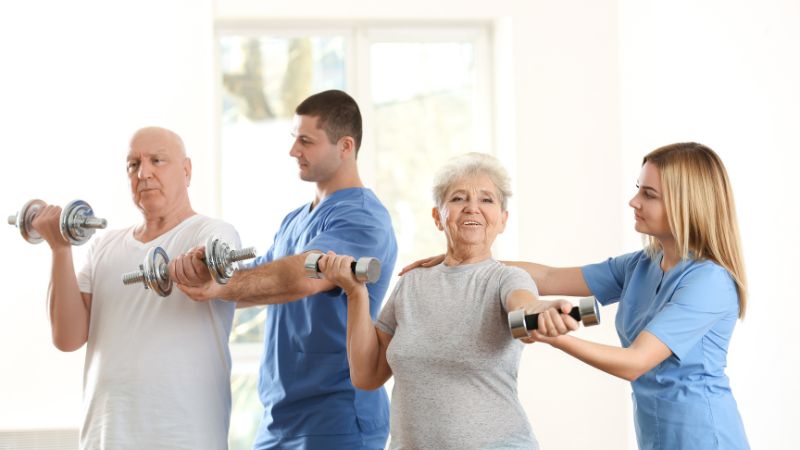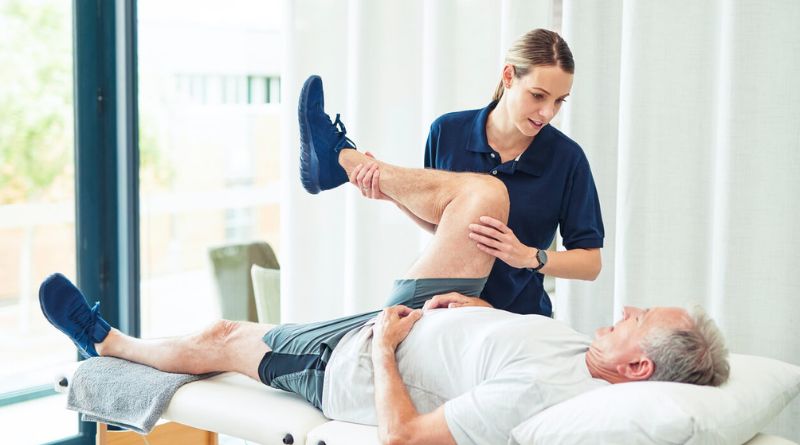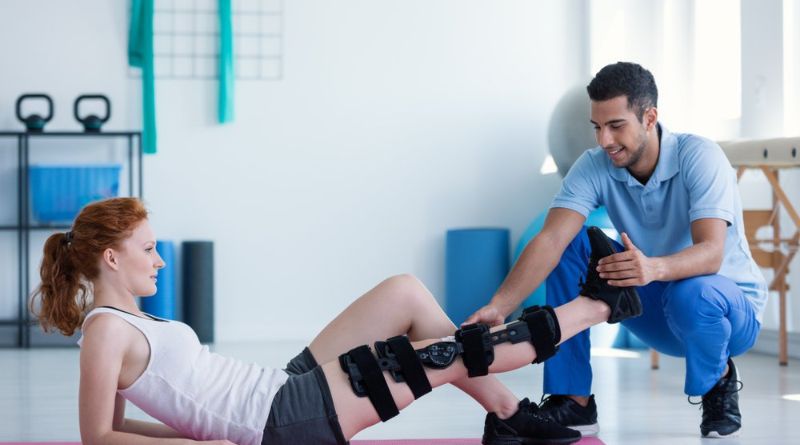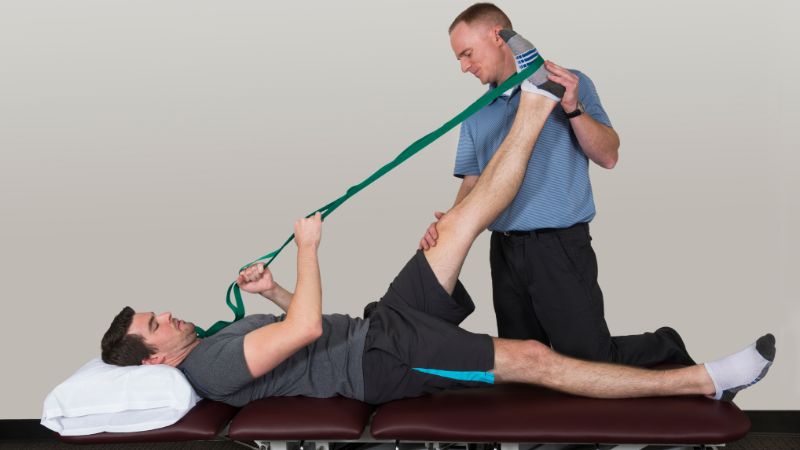As we age, maintaining mobility becomes increasingly important for overall health and quality of life. Physical therapy plays a crucial role in helping elderly patients regain and maintain their mobility, enabling them to stay independent and active. Mobility issues in elderly patients can arise from various conditions such as arthritis, osteoporosis, Parkinson’s disease, or simply the natural aging process. Addressing these issues through targeted physical therapy can significantly enhance an elderly person’s ability to perform daily activities, reduce pain, and prevent falls. With these Best Physical Therapies for Elderly Patients with Mobility Issues can get good improvement in his body. Whether recovering from an injury, managing a chronic condition, or seeking to improve balance and strength, various physical therapies cater specifically to the needs of elderly individuals facing mobility challenges. Here, we explore nine effective physical therapies that are beneficial for elderly patients.
Best Physical Therapies for Elderly Patients with Mobility Issues
Gait Training
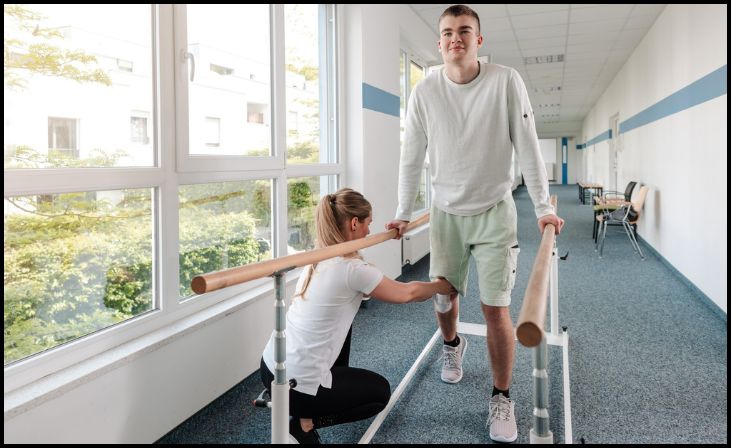
Gait training focuses on improving the manner of walking, which often becomes compromised in elderly patients due to conditions like arthritis, stroke, or previous injuries. Physical therapists analyze the patient’s gait pattern, looking for abnormalities in stride, balance, and coordination. They then design a customized program that may include exercises to strengthen leg muscles, improve posture, and enhance coordination. Tools such as treadmills, parallel bars, and gait belts are often used to assist in training. Gait training helps improve walking efficiency, making it easier and safer for elderly patients to move around. By addressing specific gait issues, this therapy reduces the risk of falls and increases overall mobility, allowing elderly individuals to perform daily activities more confidently and independently.
Strength Training
Strength training is essential for maintaining muscle mass, which naturally decreases with age. This type of therapy focuses on building and maintaining muscle strength through resistance exercises. Physical therapists develop personalized strength training programs that target major muscle groups, particularly in the legs and core. These exercises can include weight lifting, resistance band workouts, and body-weight exercises such as squats and lunges. For elderly patients, strength training helps enhance stability and balance, reducing the likelihood of falls and injuries associated with frailty. Improved muscle strength also aids in performing daily tasks such as climbing stairs, lifting objects, and rising from a chair. By maintaining and increasing muscle strength, elderly patients can enjoy a higher level of independence and a better quality of life.
Balance Exercises
Balance exercises are crucial for preventing falls, a major concern for elderly individuals. These exercises are designed to improve stability and coordination, which can diminish with age or due to medical conditions like neuropathy or vestibular disorders. Physical therapists assess the patient’s balance capabilities and prescribe specific exercises such as standing on one leg, walking heel-to-toe, and using balance boards or foam pads. These exercises challenge the body’s ability to maintain equilibrium, thereby strengthening the muscles and reflexes involved in balance. Enhanced balance improves confidence in performing daily activities, reduces the fear of falling, and allows elderly individuals to move around more safely. Regular practice of balance exercises can lead to significant improvements in mobility and a reduced risk of fall-related injuries.
Flexibility and Range of Motion Exercises
Joint stiffness and reduced flexibility are common issues that can significantly impair mobility in elderly patients. Flexibility and range of motion exercises are designed to combat these issues by maintaining or increasing the movement capability of joints. Physical therapists incorporate a variety of stretching exercises and techniques, such as static stretching, dynamic stretching, and proprioceptive neuromuscular facilitation (PNF). These exercises focus on improving the flexibility of muscles and the range of motion of joints, which is essential for performing everyday activities like reaching, bending, and walking. Regular flexibility exercises can help alleviate discomfort associated with stiffness and improve overall mobility. Enhanced flexibility also contributes to better posture, reduced muscle tension, and a lower risk of injuries, making daily movements smoother and more efficient for elderly patients.
Aquatic Therapy
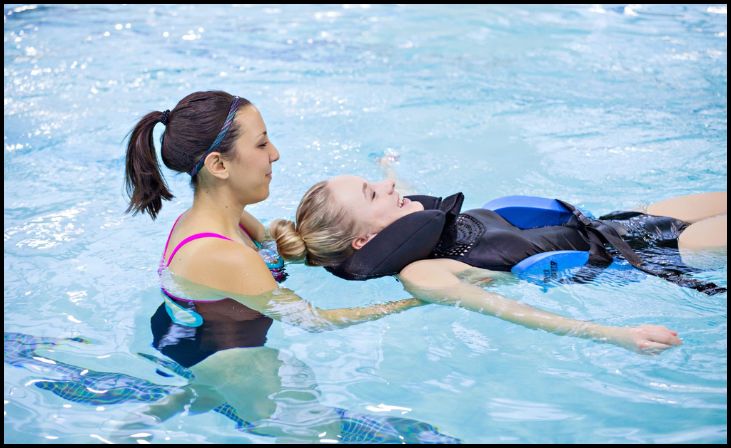
Aquatic therapy utilizes the properties of water to provide a supportive and low-impact environment for exercise. The buoyancy of water reduces stress on the joints, making it an ideal therapy for elderly patients with arthritis, osteoporosis, or those recovering from joint surgery. Physical therapists guide patients through a series of exercises performed in a pool, which may include walking in water, gentle swimming, and using water weights. The resistance provided by water helps strengthen muscles without the risk of impact injuries. Additionally, the hydrostatic pressure of water can reduce swelling and improve circulation. Aquatic therapy offers a gentle yet effective way to enhance mobility, increase muscle strength, and improve cardiovascular health. It is particularly beneficial for those who find traditional land-based exercises challenging or painful.
Assistive Device Training
For many elderly patients, assistive devices like canes, walkers, or wheelchairs are essential tools for maintaining mobility and independence. Physical therapists play a crucial role in assessing the need for these devices and training patients in their proper use. The training involves selecting the appropriate device, ensuring it is correctly fitted, and teaching the patient how to use it safely and effectively. For example, a therapist may demonstrate the correct way to hold and walk with a cane or how to navigate stairs and uneven surfaces with a walker. Proper use of assistive devices can significantly enhance safety, reduce the risk of falls, and improve the patient’s ability to perform daily activities. This training helps elderly individuals regain confidence in their mobility and maintain a higher level of independence.
Pain Management Techniques
Chronic pain is a common issue that can severely impact the mobility and quality of life of elderly patients. Physical therapists employ a variety of pain management techniques to help alleviate pain and make movement more comfortable. These techniques may include heat or cold therapy, which can reduce inflammation and soothe sore muscles, and ultrasound therapy, which uses sound waves to promote tissue healing. Electrical stimulation, such as Transcutaneous Electrical Nerve Stimulation (TENS), can also be used to block pain signals. In addition to these modalities, therapists may incorporate gentle stretching and manual therapy to relieve muscle tension and improve joint mobility. By effectively managing pain, elderly patients can participate more fully in physical therapy exercises and activities, leading to improved mobility and overall well-being.
Cardiovascular Exercises
Maintaining cardiovascular health is crucial for overall mobility and endurance, especially in elderly patients. Cardiovascular exercises, also known as aerobic exercises, help improve heart and lung function, increase stamina, and support overall physical health. Physical therapists design aerobic exercise programs tailored to the individual’s fitness level and medical condition. These programs may include activities such as walking, cycling on a stationary bike, or using an elliptical machine. For those who need a lower-impact option, aquatic exercises can also serve as effective cardiovascular workouts. Regular cardiovascular exercise helps maintain a healthy weight, reduces the risk of cardiovascular diseases, and enhances the ability to perform daily activities with greater ease. By improving cardiovascular fitness, elderly patients can enjoy better overall health and increased mobility.
Functional Mobility Training
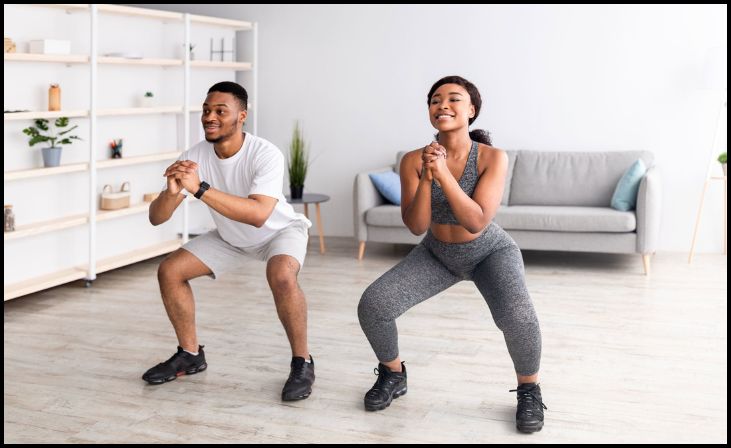
Functional mobility training focuses on improving the ability to perform everyday tasks that are essential for independent living. This type of therapy involves practicing activities that mimic daily routines, such as getting in and out of chairs, climbing stairs, or reaching for objects overhead. Physical therapists assess the patient’s functional abilities and create exercises that target the specific movements required for these tasks. For example, they may work on improving the strength and flexibility needed to rise from a seated position or the balance and coordination required to navigate stairs safely. Functional mobility training helps elderly patients develop the skills and confidence needed to perform daily activities independently and safely. By enhancing functional abilities, this therapy promotes greater autonomy and a higher quality of life for elderly individuals.
For More Related Posts Keep Visiting: 8 Best Physical Therapy for Scoliosis Management
Conclusion
In conclusion, physical therapy offers a wide range of effective treatments for elderly patients dealing with mobility issues. From gait training and strength exercises to aquatic therapy and pain management techniques, these therapies are designed to improve mobility, prevent falls, and enhance overall quality of life. By working closely with physical therapists, elderly individuals can regain and maintain their independence, enjoying a more active and fulfilling lifestyle in their later years. Physical therapy is not just about rehabilitation; it’s about empowering elderly patients to live life to the fullest extent possible.
FAQs
How often should elderly patients attend physical therapy sessions?
Frequency depends on individual needs, but typically, elderly patients may attend sessions 2-3 times a week.
Is physical therapy painful for elderly patients?
Physical therapy should not be painful; exercises are tailored to each patient’s comfort level to avoid pain.
Can physical therapy help with chronic pain management?
Yes, physical therapy includes techniques like heat, cold therapy, and electrical stimulation to help manage chronic pain effectively.

